Best Bugging In Guide – Mindset, Gear, & Supplies (2023)
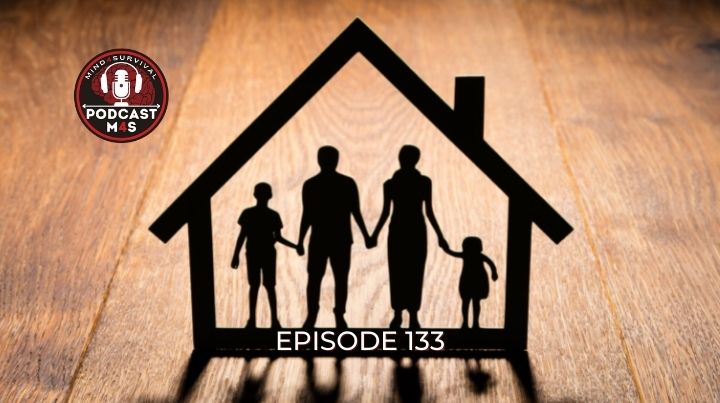

Podcast: Play in new window | Download
In these difficult times, with a deepening financial crisis, worsening supply chain disruptions, escalating tensions between nuclear-armed superpowers, and millions of average citizens feeling upset, disregarded, and taken advantage of, the time is now to double down on your efforts to prepare your home and family for the possibility of bugging in.
When it comes to bugging in, preppers have the right idea. By preparing your home and family for the possibility of living in it for an extended period, you can make sure that you are as safe and comfortable as possible in the event regularly leaving your home becomes unsafe, uncertain, and unadvisable.
And while bugging in may seem like a simple concept, there are a few things you need to know to do it right, and that's what this guide is all about.
In this guide, we'll discuss the Mind4Survival basics of bugging in. This includes preparing your home not only to be able to survive the worst the world can throw at you but also preparing so that you and your family can ride out the mayhem in an as safe, self-reliant, and confident manner as possible.
What Is Bugging In? (Mindset of Bugging In)

While many preppers focus on evacuating, or bugging out, staying put and bugging in might be the best or only option for others. And due to the fluid nature of large-scale disasters and SHTF events, everyone should have a plan and be prepared to bug in should the situation warrant it.
Definition of Bugging In
Bugging in is a term that refers to the act of staying in your home during a disaster or emergency instead of evacuating.
The idea is to hole up in your home with supplies and wait out the event or wait until it becomes safer to move about.
This strategy should be a key consideration of any preparedness-minded person's emergency plan.
History of Bugging In
The concept and act of bugging in extend back through history past the coronavirus lockdowns, past the Texas ice storms, past the siege of the Battling Bastards of Bastogne during World War II to medieval siege warfare.
On that point, when it comes to bugging in, there are some similarities with siege warfare. Both involve protecting a fixed location and preparing for a long-term stay. Both include plans and preparations to safely, survive, in an environment where the external situation is so dire that leaving one's home (or castle) is at best dangerous and at worst deadly.
And, in both cases, it is important to have plans, preparations, a strong defensive position, and enough supplies to last for an extended time.
The Advantages of Bugging In

Bugging in allows you to remain in familiar surroundings. This can help reduce stress and make it easier to cope with the situation.
Additionally, bugging in gives you more control over your environment. You can make sure that you have access to food, water, and other supplies, and you can secure your home against looters and intruders.
Finally, bugging in allows you to stay close to loved ones who may also be bugging in. In times of crisis, bugging in can be a safer and more comfortable option than bugging out.
When and Why to Bug In?
When an SHTF event or disaster strikes, the last thing you want to do is expose your family to unnecessary danger. Therefore, the best option in an emergency may be to bug in.
Bugging in can, in many cases, be the best way to keep your loved ones safe. Large-scale disasters can lead to cascading effects, such as cutting off access to essential services like water and power. Likewise, needed services such as grocery stores and medical facilities may be inaccessible or non-functioning.
By staying put, you can avoid the dangers of being on the road and put all your focus on keeping your family safe and comfortable. Plus, bugging in gives you the chance to hunker down and ride out the storm with all the supplies and amenities you need on hand.
Indicators for Bugging In
 There are many different indicators and situations that can help you to know if it's time to bug in.
There are many different indicators and situations that can help you to know if it's time to bug in.
If you have young family members, elderly relatives, or others who may need special assistance, bugging in may be the best option. This way, you can provide them with the care and support they need.
Another indicator is the type of emergency situation. If it's a natural disaster bugging in may be safer since you will have protection from the elements.
On the other hand, if it's a man-made disaster like civil unrest, bugging out may be a good option as well.
Look for indicators from the people and professions that are in place to handle disasters and society impacting macro disasters.
As a prepper you are friends with public safety personnel, right? What are the local first responders doing? Are they completely overwhelmed?
Is society breaking down around you? What's the tone and feel of the population? Do you feel it's dangerous to go to supermarkets, convenience stores, etc?
Tripwires, Judgement, and Decision Making
The bottom line is that you need to use your best judgment and make the decision that is safest for you. As I discussed in my SHTF Plan article, setting up tripwires to initiate your pre-planned response helps alleviate doubt, questions, or insecurity about taking action that may come with emotionally charged times, such as a disaster.
For example, a tripwire in your plan can be media reports of food riots that signal it's time to pull your family in and hunker down. Tripwires can take any form that you feel best informs you when it's time to take a specific action.
By using properly planned and executed tripwires you'll have the confidence time to double-check your preps and get set to bug in – shelter in place – raise the draw bridge, bat-ton down the hatches, button-up, settle in, and prepare to ride things out.
What to Expect When Bugging In?
My years overseas were spent living a bugged in life on Forward Operating Bases (FOBs), and in US Embassies and Consulates. Fortunately, not only did we have lots of weapons, but we also had high walls, guard towers, gates, and supplies shipped in. We bugged in in relative comfort.
However, while we were bugging into our bases and such, the local civilian population was largely forced to bug into their homes. That's because there was so much violence happening outside their homes, that venturing outside was a life and death decision.
In their cases, going to school, the store, work, or anywhere, came with a high risk for everyone involved. The best course of action for most, especially in the cities was to stay indoors as much as possible.
The Collapse of Critical Services
Keep in mind, that if we're lucky bugging in will be done in a home that is secure with critical services still running. In that case, think of your bugging in experience as a staycation during difficult times.
However, if critical services, such as the municipal water service are interrupted or non-functioning, your experience may transition from that of a staycation to that of a castle under siege.
Coping with a Bug In Situation
Therefore, rather than just plan for problems that may come with an extreme societal impact, try to walk yourself through the day of what it will be like to go without so many of the conveniences we're used to.
Next, once you have the feel for how your hours, days, and weeks cooped up in your home without modern conveniences, put yourself in the mind of your family members. Look at the situation through their possibly lesser informed, lesser-prepared eyes. Then work on how you will help them to better cope with the situation.
In other words, yes, you may cover the physical aspects of your survival and nice-to-haves, and if you're truly preparing, you'll find non-fear, non-dismissive, non-tough love ways of helping your loved ones into and through the mess that may be all around you.
The Basics of Bugging In – Survival
Now that we've covered the mindset, awareness, and decision making it's time to focus on what we need to do to survive. I'm not saying survive well, in luxury and comfort, I'm talking about surviving an immediate threat.
I'm talking about the first fundamental goal of preparedness, survival. Survival is the plans and preparations we have in place to make sure we meet our basic survival needs. If it doesn't directly address our most fundamental survival needs as outlined in the Survival Pyramid, then it's not applicable here.
The fundamental of survival is broken down into our seven preparedness needs.
- Immediate Response Needs
- Primary Response
- Delayed Response
- Environmental Protection
- Hydration & Sleep (HAS)
- Sustenance
- Society
Immediate Response Needs
Our immediate response survival needs are the needs we have to survive a threat that we don't see coming, or that we notice is about to happen milliseconds before it happens.
Immediate survival needs are the mental and physical preparations we take to avoid, negate, or minimize the harm an unforeseen and instantly impactful threat presents.
Immediate survival needs include things like the body armor worn to stop an unpreventable shot. It includes shuttering our windows, reinforcing our doors, hardening our children's rooms, etc.
Our immediate response measures are our capability to mentally and physically respond to an immediate threat. Immediate response measures include our mental ability, planning, and preparations to respond to an immediate threat.
They include the mental side of our response as well as passive response and defense systems that we have in place, and whatever is immediately employable in our hands when things go chaotic, kinetic, or from bad to worse.
Immediate response measures are everything that we can bring to bear against a threat within 1/3 of a second of being aware of it.
.3seconds from flash to bang.
Primary Response

Following our immediate response, are our primary survival response needs.
Our primary response measures are the passive, and active, mental and physical measures we have ready to respond to a primary threat.
A primary threat is any threat that we can deal with between .3 seconds and 3 seconds of becoming aware of the situation, threat, etc.
The concealed carry pistol you have on your hip, if you're prepared and capable of using it is a primary response measure. A primary response measure is the bag of groceries you toss at the oncoming attacker. Primary response measures are trainable and rehears-able.
A primary response measure is not an elaborate plan that takes time to develop and implement. And a primary response does not include your favorite self-defense widget stuff at the bottom of a hard to open pocket.
You have three seconds to deal with a primary response.
Delayed Response
Delayed response measures include the mental and physical preps you made to deal with anything that can kill you or another within three minutes.
This is where physical defense comes in. This is where having the needed knowledge and gear to keep oxygen going to your brain comes into play. Do you have respirators or a MIRA safety mask?
Do you have the knowledge and know-how to perform Cardio Pulmonary Respiration on someone? How about stopping massive bleeding with emergency bleeding control with tourniquets and a Stop the Bleed course?
Where your primary response measures include everything you can get to in three seconds, your delayed response measures include everything that will take you from three seconds to three minutes to put into effective action.
Everyday Carry Gear for Immediate, Primary, and Delayed Responses
You can think of your everyday carry gear in terms of your immediate, primary, and delayed response needs as well.
Immediate EDC Gear
Immediate EDC gear includes the supplies and equipment that you wear that offers passive protection and support. This is the piece of soft body armor that you slip into your child's backpack. It's the clothes you wear to protect yourself from injury and death.
Your immediate EDC gear includes the things you carry in your hand to help you overcome a difficult and deadly situation. Perhaps they're the snake gaiters and trekking poles you use when hiking in snake country.
The eye protection you wear is immediate EDC gear. So too is the rifle an infantryman walks patrol with, in his hands.
Primary EDC Gear
Primary EDC gear consists of the gear you have that is accessible within three seconds of becoming aware of the need to employ it. This, as mentioned includes the CCW pistol you carry. It's the tourniquet you have on your ankle or the individual first aid kit (IFAK) on your belt.
Primary EDC gear is not the gear you keep in the trunk of your car. Likewise, it's not the gear you have stuffed into your bug-out bag that's on your back. Now, is it what floating around at the bottom of a secured pocket or purse, such as a small pepper spray.
If it's not usable within three seconds, it's not primary EDC gear.
Delayed EDC Gear
Delayed everyday carry gear is the gear that you have available for use within three minutes. This is the gear you carry in your bug-out bag, in the back seat of your truck or car, in the truck. Stuff in the closet. Delayed EDC gear is the gear that is great to have with you and it's not getting into the immediate and primary fight.
Environmental Protection
Next is the need to protect yourself from environmental threats. And, retreating to and staying inside of your home that does exactly that for you and your family. Bugging in provides you with the capability to negate the environmental effects of living creatures and extreme weather.
Hydration & Sleep (HAS)
 Hydration and sleep are the next survival hurdles to overcome. Maintaining hydration is crucial to an effective and survival capable homeostasis. Homeostasis is defined by Britannica. com as:
Hydration and sleep are the next survival hurdles to overcome. Maintaining hydration is crucial to an effective and survival capable homeostasis. Homeostasis is defined by Britannica. com as:
“Any self-regulating process by which biological systems tend to maintain stability while adjusting to conditions that are optimal for survival.”
When it comes to calculating your daily water intake needs, the National Academies of Sciences, Engineering, and Medicine’s recommends, that men need 101 ounces of water per day (~13 cups), whereas women need 74 ounces of water each day (~9 cups). And as always, please confer with your medical professional to determine your family's individual.
While many disregard to plan for sleep, as a person nears 72-hours without sleep, their mental cognition declines drastically. People's mental state can deteriorate to the point within three days without sleep that hallucinations will begin to happen.
As is obvious, hallucinations in a life and death survival situation can spell disaster. So, create a sleep plan that takes into account all of your work and survival needs. One way to help with this is to create an environment in your home that is conducive to good sleep.
Don't take your sleep for granted. It recharges your batteries, helps you decompress, and is needed by everyone.
Sustenance
Sustenance is the need to intake, depending on size, weight, activity, and gender, approximately 2000 calories per day. In addition to a person's caloric needs, there is the need for specific macro-nutrients, vitamins, minerals, etc.
So, plan accordingly and specifically for each family member's needs. Don't slough it off and rely on a pile of rice and beans alone to satisfy your needs. Proper sustenance planning is where, I feel, many preppers come up short in their preparedness.
Don't pencil whip your nutrition needs. Pay them the attention your survival both deserves and needs.
Society
We need others to survive. Unless someone is pulling security, we are not secure when we sleep. That's especially true for a bug-in situation.
If things are so bad, that you're locking your family inside your home and hunkering down, then things are bad enough that someone should be up around the clock if possible. Notice I didn't say if convenient. I said if possible as in if you have the number of people to support 24 hours, around the clock security.
Evacuation & Rally Point
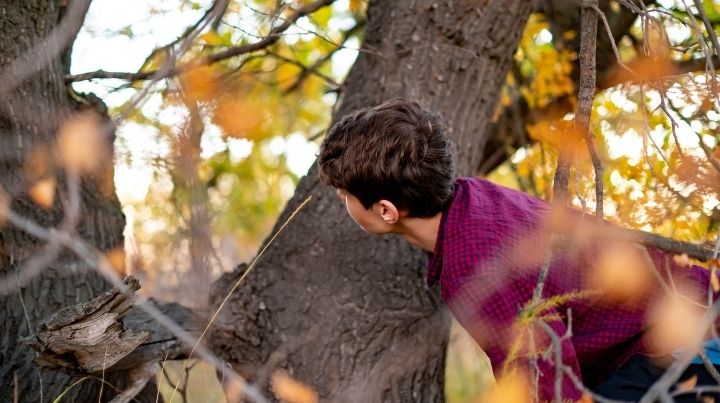
Have a plan in place in case you have to leave your home in a hurry. An attack, or home invasion that can force its way inside your home, is powerful enough that it may overwhelm your ability to effectively respond to it.
In turn, that means you and your family should have a planned rally point, or two. Consider using a PACE plan similar to this.
- Primary Plan: Meet at the Smith's home, on the next block over
- Alternate Plan: Meet up at the old oak tree on the back of the property.
- Contingency Plan: Meet under the overpass of the nearby highway.
- Emergency Plan: Escape and Evade (E&E) to grandma's house on the other side fo town.
Whatever your plan is, have one, brief it to your family, ask them questions about it, and be ready to put it into action.
One part of your evacuation and rally point planning should, if it's secure, cache supplies at your rally point. This way, if forced to leave your home, you won't be left high and dry with no resources and support.
Consider stashing a secondary bug-out bag, a few cans of food, sleeping bags, a camp stove, and anything you can think of that you might need if you have to abandon your home.
And while there may be circumstances when a person or family would NOT be in a position to flee their home, such as an upper floor apartment, etc., that's not the case for most people.
For those who have options, plan for those options. Most people who say they would never have to leave their home and that they'd defend it like the Alamo are full of the human condition. Defending your home like the Alamo sets you and your family up to suffer the fate of those at the Alamo.
Dying eliminates all of your future options other than the option of seeing the forever-after.
So, ensure you have options, by planning for the worst and preparing for the possible.
Prepping Your Home to Bug In (Safety)
 Prepping your home to bug in is just as important. This means making sure your home is secure and can provide for your basic needs in case you decide to shelter in place for an extended period.
Prepping your home to bug in is just as important. This means making sure your home is secure and can provide for your basic needs in case you decide to shelter in place for an extended period.
Start now by fortifying your home for an SHTF event and buttoning up inside. Ensure that you have the proper emergency supplies staged and ready to go. Stock up on your water and food, and do your best to create a safe, secure, and comfortable home for you and your family to ride out the storm in.
Securing Your Home
Enhance the security of your home by following the 5D's of home security. By hardening your home to potential home invaders, and other threats, you will be better prepared should that level of insanity comes knocking.
Engaging in a confrontation with other people should be one of the last options you exercise. The instant you engage in a lethal interaction in and around your home with someone else, you increase the risk to you and your family. Be smart about how and when you engage with potential threats.
There are many options when it comes to defensive items and weapons. Do your due diligence and find out which is your best option, and go with that. Don't forget to get load up on the training, education, and experience, for your defensive options.
The more you know and the more you've practiced with your defensive tactics and gear, the better your odds of surviving.
Survival Supplies You’ll Need
Getting prepared ahead of time for natural disasters and other SHTF events includes what every prepper loves, gathering supplies.
One of the needs I focus on is getting a good cache of medical supplies set.
As a paramedic, I know that while the aid kit full of first aid supplies, is flashy and fun, it's not what will be needed most often. And while I have a great emergency kit, set to go, that's not my main focus.
The medical supplies that are needed most often are the other, emergency supplies. If you struggle to come up with a list, think about what you used over a year?
Do you use flu medications? What about something for the bubbly guts? Are you someone who suffers from pollen allergies? If so, address it now and you'll be better prepared to be more comfortable when being comfortable for many might be considered a luxury.
What about prescription meds? Have you considered medications for your pets? Heck flea and tick med will be a good thing to have should the veterinarian's office become a stronghold for thugs and bad guys.
Environmental Protection
Protecting yourself and your family from the environment is one of the chief benefits of a plan to bug in. Having a safe, familiar, and comfortable roof over your head is a priceless option in emergency scenarios.
The ability to stay cool and insect bite-free in the summer is only matched by the ability to stay warm in the winter. While people with extensive solar and wind power off-grid options may be able to manage air conditioning in the summer, most will at best have fans to provide cooling measures.
However, while the summer cooling options may be limited, winter heating options may be more attainable.
First, consider living out of one room, or at a minimum, as few rooms as possible to conserve heat. Also, work to seal up any avenues for heat loss and have warm clothing for the winter months. When it comes to emergency heating needs, keep an emergency propane heater ready to go in case your electric or natural gas fails.
While a wood-burning stove or a wood-burning fireplace provides an excellent heating option for those who have them, they must be used carefully. The smoke put off by a wood stove can be just what a bad guy needs to see and smell to decide to smash in your backdoor with guns blazing a warm and desirable option.
Water Storage
 Water-wise, you'll be in a great spot as long as the water to your house keeps flowing. However, should the situation degrade to the point the tap water stops running, you better have a plan to locate and collect water ready to go.
Water-wise, you'll be in a great spot as long as the water to your house keeps flowing. However, should the situation degrade to the point the tap water stops running, you better have a plan to locate and collect water ready to go.
Part of your plan can and should rely on your pre-stored, long-term water storage preps. Keep in mind, when it comes to water storage, that water is heavy and takes up a good deal of space. That may be an important issue for urban preppers and others with only small storage footprints available.
So plan out how to store water. While commercially bottled water is an easy option to get you going, there are better options than expensive bottled water.
Here's an article for you if you're looking for some DIY water storage options.
When it comes to ensuring that you have clean drinking water there are many ways to purify it, from being able to boil water to filtration. You should be ready with several water purification options to ensure you and your family stay hydrated.
One water purification system resource that I personally own and found extremely great for preppers is the Clear Source Ultra RV Water Filtration System. All you need is a garden hose and a water source, and this three-stage water filtration system will keep you drinking plenty of clean and tasty water.
Food Storage for Sheltering in Place
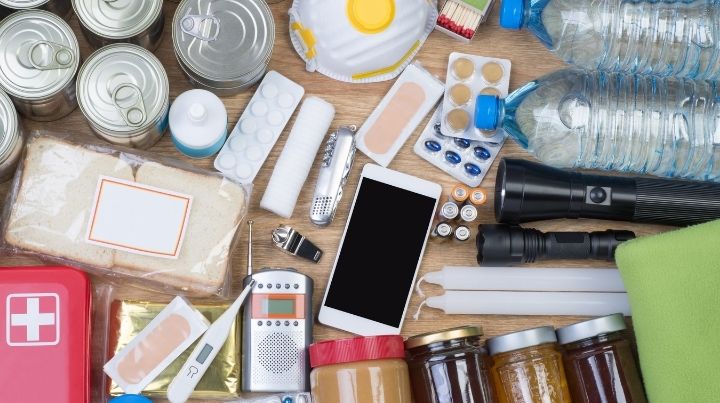 Following water, food is the next survival needs that most people address upfront. When it comes to sustenance, it's an easy to understand calories in calories out manner.
Following water, food is the next survival needs that most people address upfront. When it comes to sustenance, it's an easy to understand calories in calories out manner.
The fact is, your body is a machine and it needs fuel to operate. Not only do you need fuel to operate you need the right kind of fuel and in the right amounts to operate.
Therefore, make sure to stockpile food for your family now, before obtaining food due to inflated costs, supply chain problems, and civil unrest make getting food difficult.
If possible focus on long shelf life food so that you have enough food to last over the long term. Buying and securing your own food, and storing it in food-grade containers is always a great option for establishing a foundation for your SHTF meal planning.
Sanitation during bugging in
Sanitation is always important, but it becomes even more so when securing yourself in your home for the long term.
Human waste can quickly contaminate an area and spread disease, so it is essential to have a plan for dealing with it.
Toilets are the most common way to deal with human waste, but they require functioning sewage systems. If the sewage system is down, then it is necessary to use an alternate method.
Garbage bags can be placed in the dry toilet bowl and under the toilet seat. (Do you know how to shut off the water to your toilet?) The garbage bag is used to collect the waste. The waste can then be buried or disposed of in a septic tank if you have that option.
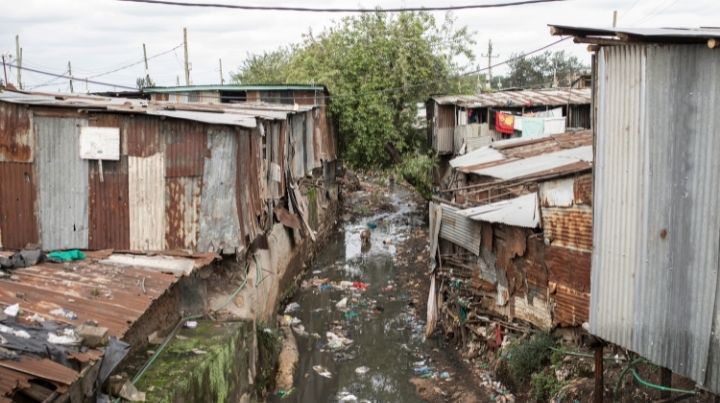
If a situation devolves to the point where your sanitation needs are met by stuffing a trash bag into your toilet, things aren't good. And if that's the case, make sure you have plenty of disinfectant on hand, such as unscented household bleach, or something else that is effective in preventing the transmission of sanitation and hygiene-based illnesses.
One point to help make life easier with your sanitation planning is a $29.95 answer to any potential fights over toilet paper, or worse yet, running out of toilet paper. That answer is a bidet.
Trust me, I never thought I'd say that and then I used one. Bidets are a thing and a great SHTF hygiene option.
Finally, while it may not be the most pleasant task, sanitation is essential for bugging in. By taking proper precautions, you can help to prevent the spread of disease and keep your family healthy.
The Day-to-Day of Living Bugged in During SHTF

Now, let's cover the day-to-day struggle while living bugged in.
Staying inside will not be a walk in the park. If you bug in, plan on it to be a challenging experience.
Without that understanding upfront and thinking through the day-to-day mental, physical and emotional struggles that come with living cooped up, in a house, with your loved ones and maybe others, while the world burns down you will be insanely difficult for everyone.
It will be even more difficult for the people like you who know and understand the gravity of the situation. And, part of your difficulty will be to keep your motivation up, which in turn will help motivate and instill confidence in those around you. That's especially true if you have any young people sheltering in place with you.
If anything many of us can learn something from the COVID lockdowns. While those lockdowns sucked, they'd be much worse if society was collapsing even more than it did during COVID. Watching riots and looting on TV is one thing. Watching it happen outside of your front door is another thing.
How to Make Bugging in Work for You
Life living bugged in will quickly become mundane and irritating if you don't have a plan to keep people engaged.
 Make life as normal as possible. Assign tasks. Put people on a schedule. Try to eat together and make meals fun times that people look forward to. Get people socializing. Make one-pot meals for the entire family to easily eat together and minimize the washing needed
Make life as normal as possible. Assign tasks. Put people on a schedule. Try to eat together and make meals fun times that people look forward to. Get people socializing. Make one-pot meals for the entire family to easily eat together and minimize the washing needed
The times are going to be hard and they'll be harder if people begin to drift off into their own, lonely world. The agitation and depression that come with living in cramped quarters under stressful conditions can be depressing and isolating, even in a house full of people.
So, again, as the prepared person in all of this, it will be on you to keep your and their spirits up. You do NOT get the luxury of a meltdown. You're someone who will be looked to for calm in the storm.
People are depending on your so buckle down and noodle through what it will truly mean to live bugged in, and then work on ways to make that vision better.
Read this article for ideas on how to improve your time bugged in: Don’t Hunker Down Without These Bug In Essentials
The Bottom Line on Bugging In
Hunkering down can be a viable option during an SHTF scenario, but it’s not without its own set of challenges. You need to make sure your home is ready to accommodate you and your family for an extended period, and you need to have enough supplies on hand to last.
What are your thoughts on bugging in? Let me know in the comments below.
Additional Resources:
- Should You Bug Out or Bug In? It Depends…
- My Bug Out Story
- Is It Time to Bug Out? How to Know When to Go
Stay safe,

Related Articles
FREE Guide
Read the Best Seller
Join Mind4Survival
Stay informed by joining the Mind4Survival! 100% Secure! 0% Spam!
Affiliate Disclosure...
Mind4Survival is a free, reader supported information resource. If you make a purchase through our link, we may, at no cost to your, receive an affiliate commission.
Do You Want To Be Ready No Matter What?

Download our free 39-page guide with interactive, 7-Day Emergency Kit Checklist and take the first step toward real preparedness.
- Know exactly where to start.
- Save time and money.
- How-to build a complete Basic Emergency Kit.
- Level up your safety and security.
Join Mind4Survival
Stay informed by joining the Mind4Survival! 100% Secure! 0% Spam!

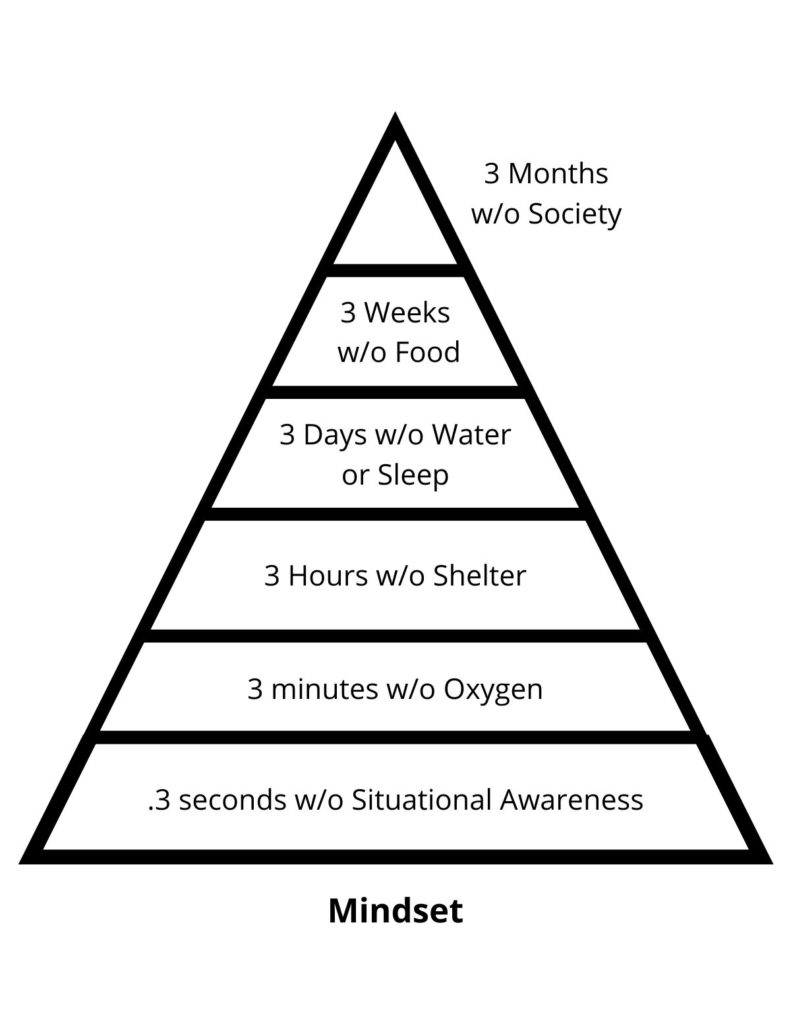
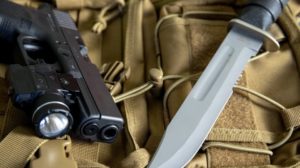
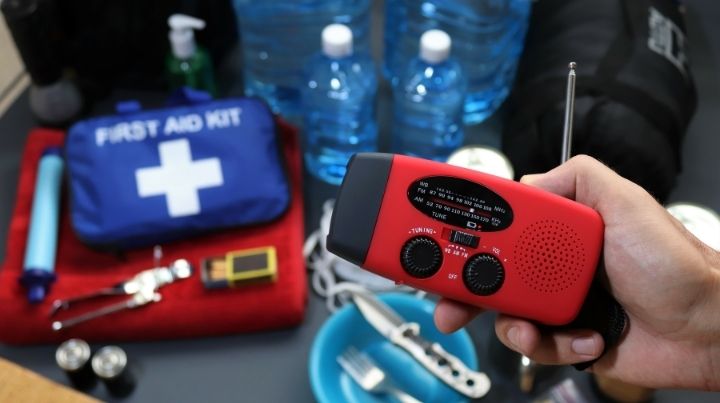





One suggestion? Get to know your neighbors. Even if they don’t prep (and you don’t have to tell them you do unless you trust them), they have to be aware of what’s been happening this past year. The threat of high inflation can easily get people to think about stockpiling, for example. Down here in Houston, smart people prepare for hurricanes. It isn’t much to take those preparations to a higher level.
I don’t have a secret bugout location up in the mountains somewhere. Most of us don’t. My plans are for bugging in. We know our immediate neighbors well. Get to know yours.